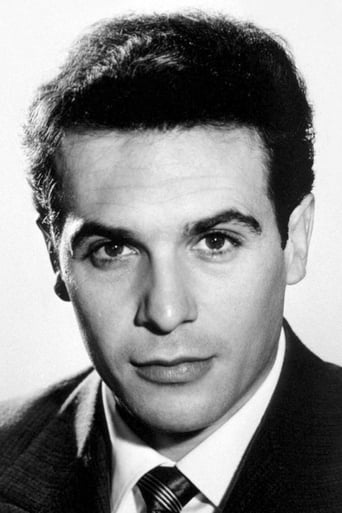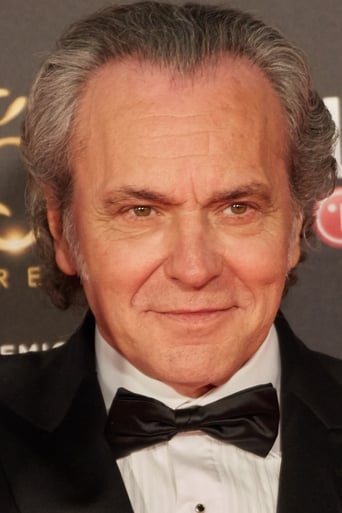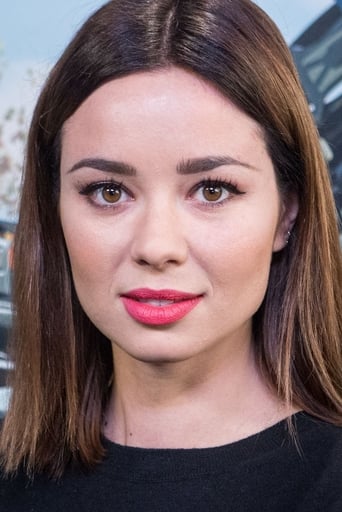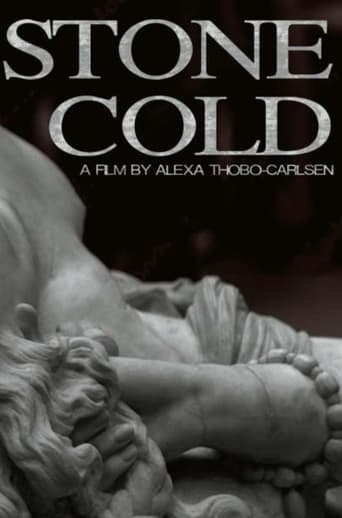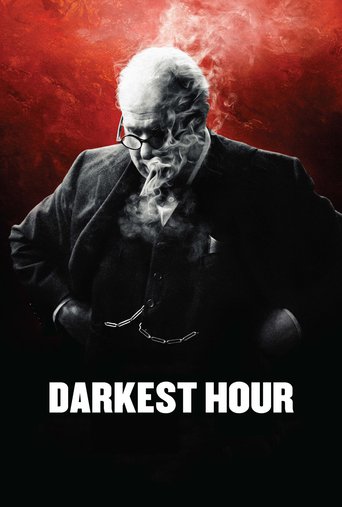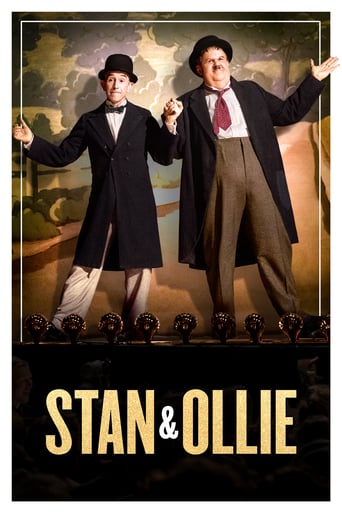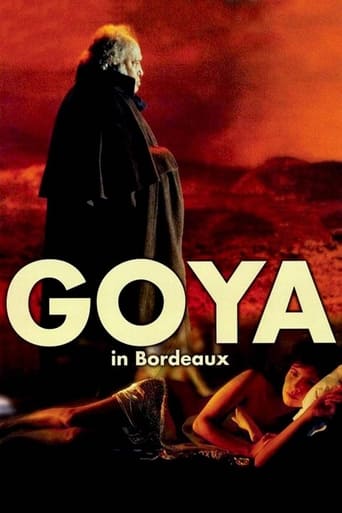
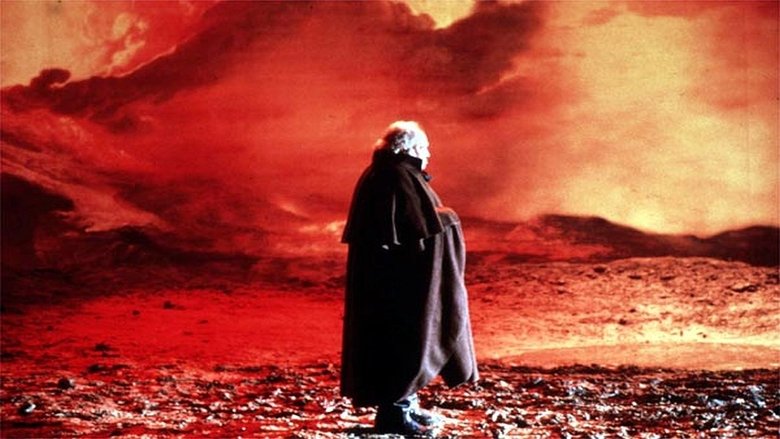
Goya in Bordeaux (1999)
Francisco Goya (1746-1828), deaf and ill, lives the last years of his life in voluntary exile in Bordeaux, a Liberal protesting the oppressive rule of Ferdinand VII. He's living with his much younger wife Leocadia and their daughter Rosario. He continues to paint at night, and in flashbacks stirred by conversations with his daughter, by awful headaches, and by the befuddlement of age, he relives key times in his life.
Watch Trailer
Cast


Similar titles
Reviews
That was an excellent one.
Save your money for something good and enjoyable
I don't have all the words right now but this film is a work of art.
Through painfully honest and emotional moments, the movie becomes irresistibly relatable
The story is presented to us very much like a mosaic....many colourful pieces which have to be put together in order to discover the real Goya, official court painter of Spain. Unfortunately many of the pieces are missing.Sorting through his host of memories, the aging Goya tells his daughter who happens to be interested in art herself about the importance of freedom of expression...to be original and to follow her own path. To have an old sick man narrating the story tends to slow things up and the film at times becomes rather dreary and boring.However, some of the incidents expressed in his works of art are very interesting and very familiar e.g. the painting of the Duchess of Alba posing as the naked Maja and the execution of the Spanish by the hostile French army under Napoleon.In the early part of the film (which happens to be rather slow) the theatrical device of using transparent wall with back lighting is effective.No one can quibble about the overall artistry of the film....the dancing, music, wonderful costumes of the courtiers in their finery and powdered wigs...all very correct for the period.There were a couple of errors worth noting. When the lightning storm strikes and the windows blow in and Goya goes over to shut them, the curtains cease moving before he actually shuts the windows. And again, if you watch carefully, Goya as a young man paints with his left hand and as an older man paints with his right. Strange, don't you think?
I have never heard of this film, never heard of this director, but a friend shoved a VHS copy in my hand and said, "WATCH THIS!" After watching it, I am still spellbound enough to comment on it.While I can't say I will bow down in awe to Saura, I was certainly captivated by his work with this film. GOYA is a glimpse into the artist's influences, his fears, and his feelings; it is a glimpse into the artistic process. I found Goya's journey fascinating, and I especially appreciated the non-linear storytelling approach. Rather than barreling through a series of events that define WHY Goya is the way he is and why he painted the way he did, the audience is, in effect, putting together the pieces of a big emotional puzzle. And how the puzzle fit together or didn't fit together was really what kept me enthralled for two and half hours. Anyone interested in art should pick up this film.
Peter Greenaway was the first to show us that film could be "moving painting" (as opposed to moving photography). The life of Goya is reflected to the screen through his paintings and it is very beautifully done.Saura is very careful to stress the "artistic" side of Goya's personality and all his love affairs, political views are secondary to it. You can get a clear picture of what kind of a painter this spanish was. A little too formalistic maybe...Good job anyway. Pleasure for the eyes..
The episode of life of the Spanish painter Goya portrayed in this film is told through dreamlike anti-realistic settings and colours. One falls under the impression that the film belongs more to cinematographer Vittorio Storaro than to the actual director of the film, but that happens very often with this colour-crazy Italian (remember the Bernardo Bertolucci films). The last films of Fassbinder also spring into mind at times, especially when colour is achieved through projection of coloured light (instead of the objects themselves containing colour), which is understandable in the case of the German director, since he started off in theatre, but less so in Saura's case. And at certain moments the theatrical techniques used are stretched too far into the world of theatre, seeming to forget that what we are supposed to be watching is cinema and not a videotaped play, as in the use of a wall that at times is opaque and at other times becomes transparent. But all in all the film is a pleasure to watch, especially if you appreciate good photography.


